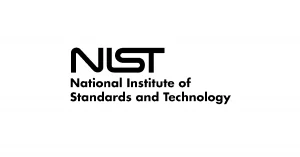NIST Special Publication 800-53 Summarized in NMT 500 Words.
NIST Special Publication 800-53: Security and Privacy Controls for Information Systems and Organizations, provides guidelines for federal agencies and organizations to manage and secure their information systems.

The document outlines a comprehensive framework for selecting and implementing security controls to safeguard against potential cyber threats – but It is almost 500 pages long!
Below are the key points of the publication:
- Risk Management Framework (RMF): The RMF provides a structured approach for managing security and privacy risks to organizational operations, assets, individuals, and other organizations.
- Security Controls: There are 20 security control families that cover various aspects of information security. The controls are categorized into three classes: management, operational, and technical. Agencies and organizations can select controls that are appropriate for their systems.
- Minimum Security Requirements: Each control family has a set of minimum security requirements that must be implemented to ensure the system’s security. These requirements are based on the risk assessment of the system.
- Tailoring: Organizations can tailor the security controls to meet their specific security requirements. This process involves selecting, implementing, and assessing the effectiveness of the security controls based on the organization’s risk management strategy.
- Continuous Monitoring: Organizations must continuously monitor their systems to ensure that the security controls are effective and the system remains secure.
- Assessment: Organizations must assess their systems periodically to determine if the security controls are implemented correctly and are effective in mitigating the risks.
- Authorization: Before a system can be deployed, it must be authorized by an authorized official. The authorization process involves assessing the risks, ensuring that the security controls are in place, and verifying that the system meets the organization’s security requirements.
- Security Assessment and Authorization (SA&A): The SA&A process involves assessing the security controls, authorizing the system for operation, and monitoring the system’s security posture continuously.
- Information System Boundary: The information system boundary defines the boundary of the system and includes the hardware, software, and data that make up the system. The boundary is used to determine the security controls needed to protect the system.
- Security Plan: Organizations must develop a security plan that describes the security controls that will be implemented and how they will be monitored and assessed. The security plan is a critical component of the Risk Management Framework (RMF).
- System Development Life Cycle (SDLC): The SDLC is a process used to develop and deploy information systems. The process includes planning, designing, building, testing, deploying, and maintaining the system. Security must be integrated into the SDLC at every stage.
- Incident Response: Organizations must have an incident response plan that outlines the steps to be taken in the event of a security incident. The plan must be tested and updated regularly.
- Privacy: Organizations must protect personal information by implementing appropriate security controls and following established privacy policies and procedures.
- Training: Employees must be trained on information security policies, procedures, and practices to ensure they understand their responsibilities and can implement security controls effectively.
- Security Assessment and Authorization (SA&A) Roles and Responsibilities: The publication outlines the roles and responsibilities of various stakeholders involved in the SA&A process, including the system owner, authorizing official, security control assessor, and others.
In summary, NIST Special Publication 800-53 provides a comprehensive framework for managing and securing information systems in federal agencies and organizations. The framework includes the risk management process, security controls, minimum security requirements, and continuous monitoring, among other things. Organizations can tailor the security controls to meet their specific security requirements and must continuously assess and monitor their systems’ security posture to ensure they remain secure.